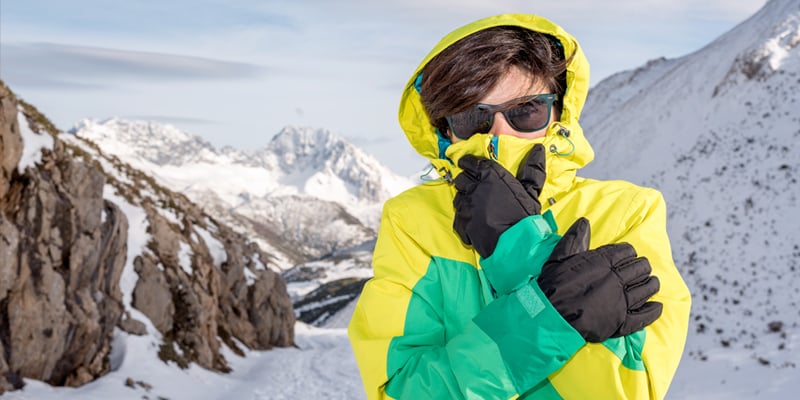
By
Rob Boyle
October 10, 2024
Updated
October 10, 2024

What is cold weather stress and how can I protect myself from cold-related injuries?
Cold weather stress is extremely dangerous and could cause health emergencies.
Cold stress happens when heat leaves the body rapidly due to a drop in temperature and increase in wind speed.
A cold environment forces the body to work harder to maintain its temperature. As temperatures drop and wind speed increases, heat can leave your body more rapidly, putting you at risk of illness and injury or in extreme cases hypothermia.
What are types of cold stress and what are the symptoms?
The three most common types of cold stress include:
- Hypothermia
- Frostbite
- Trench Foot
Hypothermia
Hypothermia occurs when the body's temperature drops to 95°F (35°C) or below. Initial signs show the person is alert with uncontrollable shivering.
What are the symptoms of hypothermia?
- Confusion/disorientation, memory loss
- Slurred speech, incoherence
- Drowsiness, apparent exhaustion, heart rate and/or breathing slows
- Loss of consciousness
What should I do if I have hypothermia?
- Call 911 immediately - If medical help is more than 30 minutes away, give them warm, sweetened drinks if they are alert (no alcohol)
- Move the person to a warm place
- Remove wet clothing and change them into dry clothes
- Cover the body including head and neck with blankets
- Apply heat packs to the armpits, sides of chest, neck, and groin
Frostbite
Frostbite is when the body tissue freezes, typically affecting the extremities like hands and feet and may result in amputation. It can occur at temperatures above freezing due to wind chill.
What are the signs and symptoms of frostbite?
- Numbness, loss of feeling in extremities
- White or pale appearance
- Red skin, gray/white patches
- Skin feels firm/hard and may blister
What should I do if I have frostbite?
- Call 911 immediately - If medical help is more than 30 minutes away, give them warm, sweetened drinks if they are alert (no alcohol)
- Follow the same recommendations as hypothermia
- Do not rub the frostbitten area
- Loosely cover and protect the area from contact
- Avoid walking if feet are affected
- Do not try to rewarm the area unless directed by medical professional
Trench foot
Trench foot is a non-freezing injury to the foot caused by lengthy exposure to wet and cold environments. It can occur at air temperature as high as 60°F (15°C), if feet are constantly wet.
What are the symptoms of trench foot?
- Redness
- Swelling
- Numbness
- Blisters
What should I do if I have trench foot?
- Get to a warm area
- Remove wet socks/shoes
- Air dry the foot in a warm area
- Keep affected feet elevated
- Avoid walking
- Get medical attention
Maintaining the necessary precautions to avoid cold-related illness doesn't completely prevent illness from happening. Anyone working on cold weather may be at risk for the three most common types of cold stress, and it's important to watch for signs and know what to do should you or someone else experience these symptoms.

